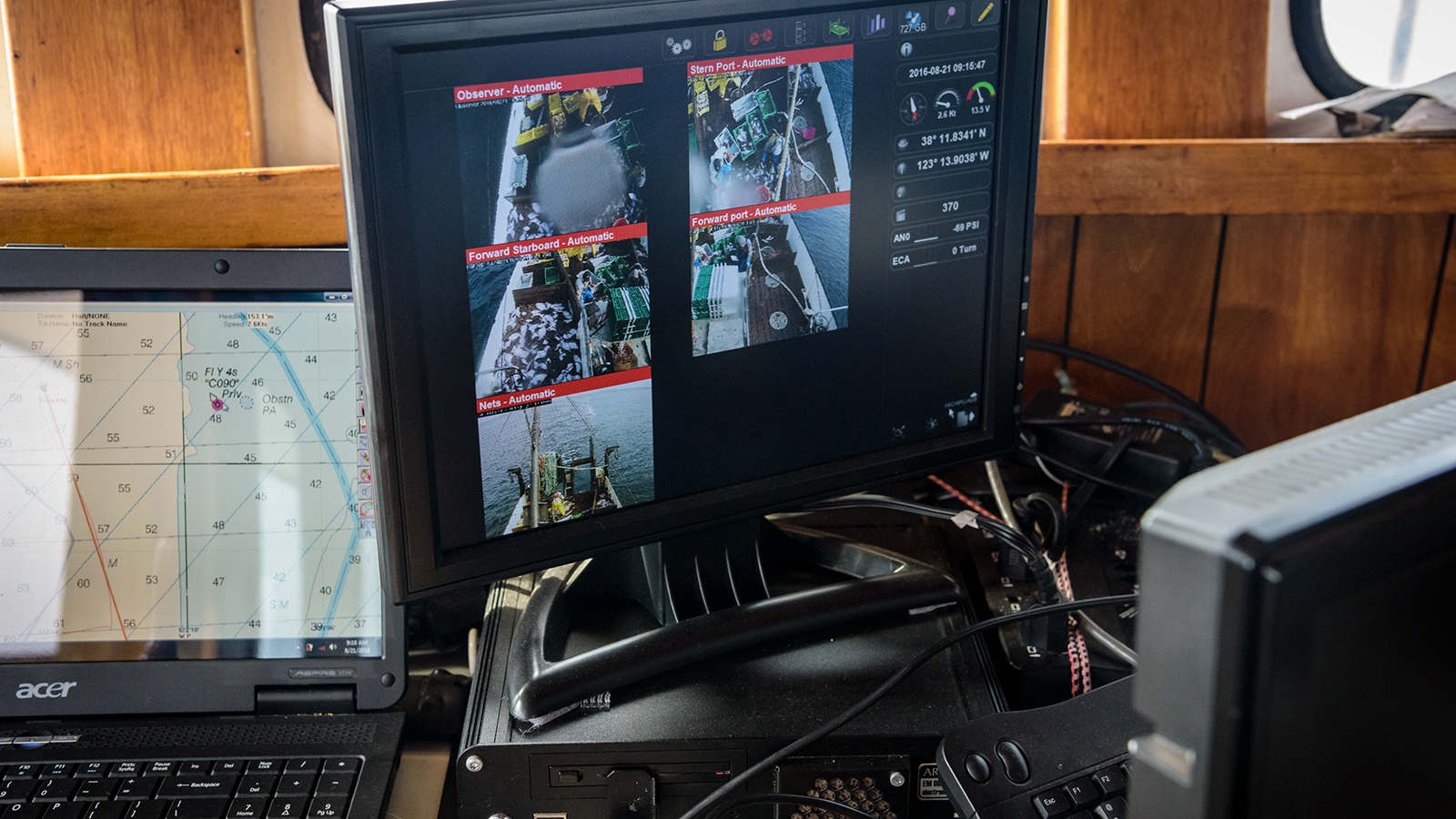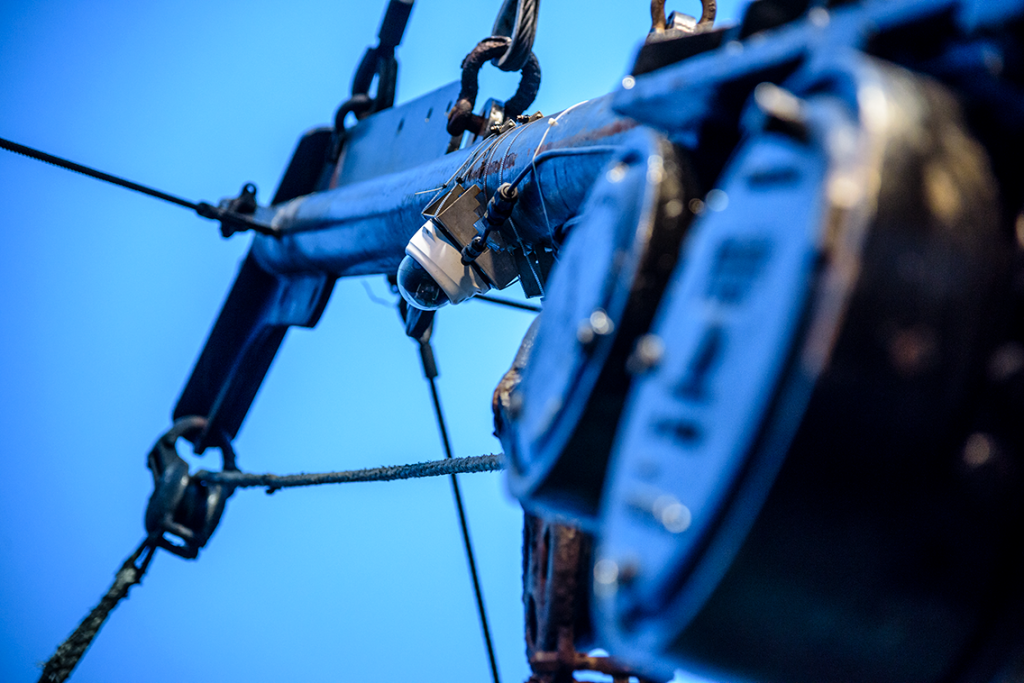New Fish Tech to Help Manage Fisheries for Sustainability Gets a Greenlight
These days, most headlines about the world’s fisheries are heavy on a vocabulary of loss and resignation. There’s overfishing, illegal fishing and the problems of bycatch. Then there are the results of those activities—collapsing fisheries, broken communities, lost livelihoods, poor nutrition and destruction of healthy ocean ecosystems.
But disaster is not the only story. The truth is: the world does not have to be resigned to a diminished future for fish and fishing because we live in a time of unprecedented innovations to solve one of the central challenges—the Gordian Knot—of managing fisheries for sustainability: the lack of data.
In April 2017, the Pacific Fishery Management Council, responsible for managing West Coast fisheries in U.S. federal waters, announced that it had approved regulations for the use of electronic equipment—cameras, sensors and other gear—to monitor fishing in the West Coast Groundfish fishery.
This approval of electronic monitoring by one of 8 regional fishery management councils, ushers in a new technology for data collection that will help not just fisheries in California, but fisheries around the world as well.
Unraveling Knotty Problems One Thread at a Time
Getting fisheries data reliably and relatively cheaply is a problem the Conservancy has been working on all over the world for more than a decade. Like the work on electronic monitoring in California, Conservancy scientists in New England and in the Western and Central Pacific are also working in partnership with fishermen to test the efficacy of electronic monitoring for managing fisheries. In the Pacific tuna fisheries, the Conservancy and its partners are taking electronic monitoring a step farther — pioneering solutions that pair electronic monitoring with Artificial Intelligence to identify when a fish is caught and what kind of fish it is from cameras mounted on longline fishing boats.
“Everybody understands,” notes Kate Kauer, Fisheries Project Director for The Nature Conservancy, “no matter what part of fishing you work on or care about – fisherman, scientist, manager, seafood supplier, seafood consumer – you really need accurate, timely information to make good decisions. Getting that information, that reliable, consistent data, is the most challenging part of managing fisheries effectively. The approval of electronic monitoring is a big step forward in getting good data, both reliably and relatively cheaply.”
One of the most forward-thinking laboratories of innovation in managing fisheries for sustainability is found in a successful, long-running collaboration between Conservancy scientists, resource managers and commercial fishermen in California.
“One reason we lack the right data is that collecting verifiable information about fishing activity out at sea is typically very expensive and difficult,” says Kauer, who works closely with the fishermen and managers. “California’s groundfish fishery presented the Conservancy and its partners with an opportunity to test new technologies that could meet the fishery’s strict monitoring standards in more cost-effective ways that worked for both fishermen and managers.”
Because it operates as a catch-share – where fishermen are allocated privileges to harvest an agreed-upon share of the fishery in certain areas – the fishery requires 100 percent monitoring. Managers and fishermen need to know with a lot of certainty how many fish are coming out of the water so that allocations are met fairly among all the shareholders.

Meeting monitoring requirements hasn’t come easy or cheap. Right now, fishermen in the catch-share fishery must schedule ahead of time to have a certified fishery observer (a human one) on their boats every time they go out. The observers can cost more than $500 a day and scheduling can be difficult, but the data they collect are necessary for sustainable fisheries management.
For fishermen, this cost can squeeze already tight margins. “We have no issue with being accountable for what we catch, but we are operating in a fishery with small margins and high costs and need options that are affordable and don’t keep us from being able to harvest efficiently,” said Geoff Bettencourt, a fisherman out of California’s Half Moon Bay.
“For this kind of fishery management program, which can be very effective in terms of keeping a fishery healthy and fishermen fishing,” says Kauer, “for it to be durable over time, there has to be a cheaper less cumbersome way to get the data out of the fishery.”
Which is where collaboration, technology and innovation come in: Electronic monitoring can provide a more cost-effective way to meet the strict monitoring requirements in the groundfish fishery. It will also offer fishermen flexibility in choosing the monitoring method – human observer or electronic observer – that suits them best.
Innovation is Slow Until It Isn’t
In principle, electronic monitoring – essentially putting high-resolution video cameras and related sensors and software on fishing boats to record all fishing activity for later review by managers – sounds simple and obvious. In practice, there was a lot of work to be done to prove that electronic monitoring could be both less expensive and as accurate in monitoring fishing activities as human observers.
As the Executive Director of the Half Moon Bay Groundfish Marketing Association, Lisa Damrosch, who is a part of a fourth generation fishing family, understood all too well the challenges as well as the opportunities presented by electronic monitoring.
“It’s not possible to meet the 100 percent accountability standard without some cost and commitment by fishermen,” she says. “Our goal has been to provide options and bring fishermen’s recommendations to the table.”
The Conservancy, working in close collaboration with fishermen, fishery managers, and other partners, spent several years testing electronic monitoring technology and efficacy. In addition to providing scientific and research expertise, the Conservancy’s role was also to help take the risk of innovation off the table for fishermen by using an exempted permit (or “EFP”) – that allowed fishermen to test the system without running afoul of regulations if something went wrong. The Conservancy and partners also covered the hard cost of camera equipment and installations for boats participating in the pilot project.
“Partnering with TNC made navigating the EFP process possible. It took a long time, but this pilot and many others have proved EM can work if the programs are designed the right way,” says Damrosch.
The West Coast is expected to be the first region in the U.S. to move from a pilot program to full implementation of a stakeholder-approved electronic monitoring program. And it’s not just about this one place. The policies developed and implemented here are already serving as a model for other regions of the US, like New England and Alaska – and the Conservancy is also fielding interest from countries like New Zealand that want to learn from our experience.
“Ultimately,” according to Kauer, “this project has helped secure conservation gains made in the groundfish fishery, but is also making contributions to a global body of work attempting to harness technology to make it easier and cheaper to capture fisheries data, transform it into actionable information, and improve sustainability.”




How do you prevent tampering with the camera and or the data it collects?
Hi John — I checked with Kate Kauer for an answer to your question and she answered, “The electronic monitoring (EM) systems installed on the vessels are “tamper-evident” so if anyone attempts to tamper with the system or with the recorded video, that activity is logged and reported to the regulators. While the systems can’t be considered fully tamper-proof, the current controls in place provide the highest level of assurance that data integrity is maintained.”
For more detailed information about specific tamper-resistant qualities of the cameras, you’ll likely need to check with different electronic monitoring service providers.
Thanks for your question~
Cara